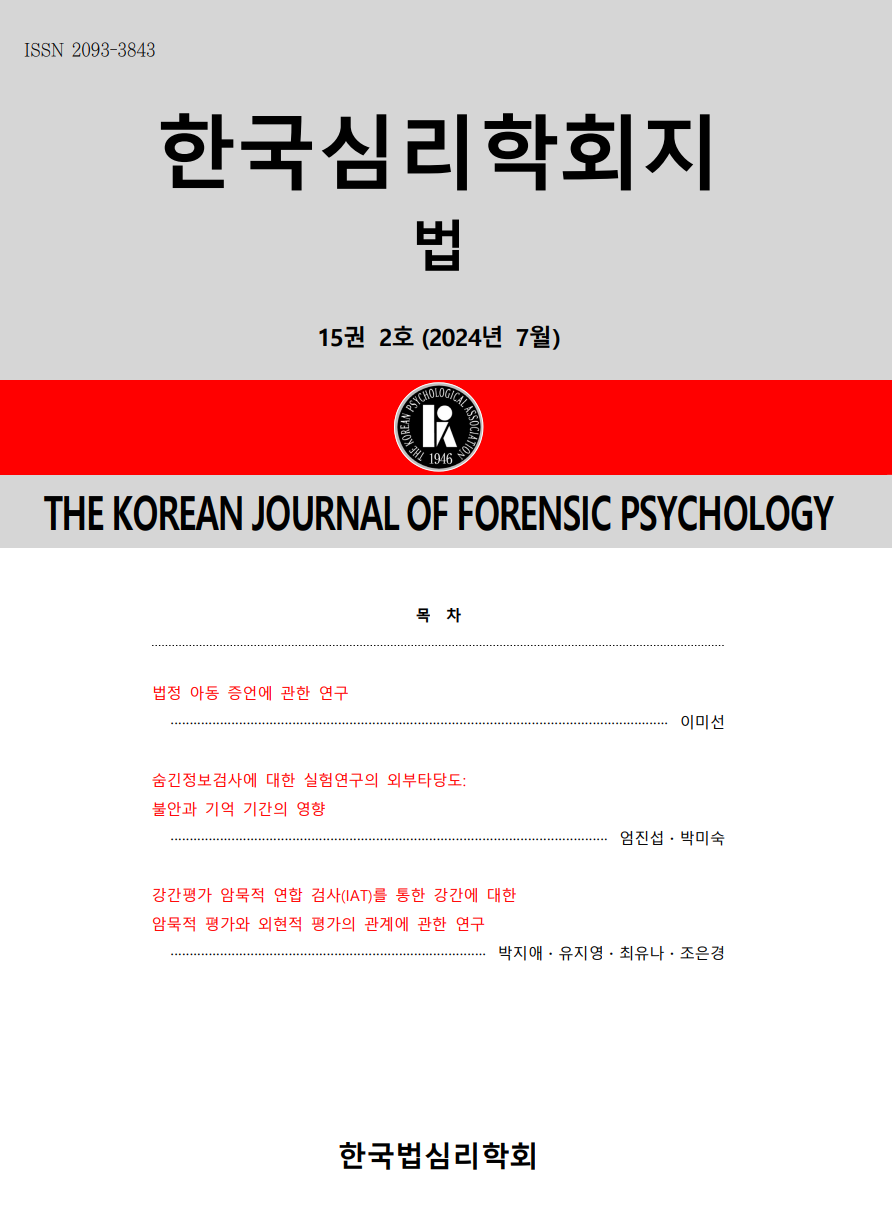open access
메뉴
open access
메뉴 ISSN : 2093-3843
ISSN : 2093-3843
The motivation of underlying gambling is a strong factor to explain gambling behavior. The aim of this study is to examine the extent to which the relationship between depression and gambling bahavior is explained by aversion to negative affect depending on the level of antisocial disposition. The participants were 239 university students and answered the Korean Diagnostic Test for Personality Disorders(K-PDT), Korean Depression Scale(KDS), the Korean version of Canadian Problem Gambling Index 2011 (KCPGI-2011), and Gambling Motives. The results indicated that aversion to negative affect as a motivation for gambling explained the relationship between depression and gambling behavior among the individuals with relatively high antisocial disposition]. But the aversion to negative affect did not explain the relationship among the individuals with relatively low antisocial disposition. Implications of the findings are discussed with respect to the gambling behavior of individuals with or without antisocial personality.
권선중 (2014). 도박 관련 신념과 문제성 도박의 관계에 대한 재탐색: 잠재성장모형을활용한 단기 종단 연구. 청소년학연구, 21(4), 359-376.
김교헌, 성한기, 이민규 (2004). 도박성 게임이용자의 심리사회적 특성과 문제성 및병적 도박의 예측요인. 한국심리학회지:건강, 9(2), 285-320.
김아영, 차정은, 권선중, 이순묵 (2011). CPGI의한국판 제작 및 타당화. 한국심리학회지:일반, 30(4), 1011-1038.
김용현, 신재헌, 김상운 (2010). 도박문제에 대한 치료ㆍ감독기관 활동의 활성화에 관한연구. 한국치안행정논집, 7(3), 111-134.
김진혁 (2013). 도박의 현실적 통제방안. 한국공안행정학회, 52, 11-36.
민성길 (2006). 제 5판 최신정신의학. 서울: 일조각
사행산업통합감독위원회 (2010). 2010년 사행산업 이용실태 조사. 서울: 사행산업통합감독위원회.
사행산업통합감독위원회 (2014). 2014년 사행산업 이용실태 조사. 서울: 사행산업통합감독위원회.
신희천, 신은향 (2000). 이상심리학 시리즈 19:공격적이고 폭력적인 그들, 반사회성 성격장애. 서울: 학지사.
유채영, 김은혜 (2014). 문제도박 경로에 대한탐색연구: 사회적 역기능과 문제음주를중심으로. 사회과학 연구, 25(4), 317-341.
이규환 (2009). 의사들이 가르쳐주지 않는 마음건강 X파일; 불안한 사회, 갈등하는 가족에 도사리는 마음병 정복 원리. 왕의서재, 201-207.
이인혜 (2004). 카지노게임 선호유형, 성별, 도박심각성과 심리적 특성 간의 관계-비합리적 도박신념과 충동성을 중심으로. 한국심리학회지: 건강, 9(2), 351-378.
이정균 김용식 (2003). 제4판 정신의학. 서울:일조각.
이준복, 윤상연, 허태균 (2014). 누가, 왜 불법도박을 할까?: 불법도박 경험 수준에 따른심리적 특성. 한국심리학회지: 문화 및 사회문제, 20(2), 155-176.
이태원 (2004). 카지노출입자의 사회인구학적특성, 도박중독, 그리고 도박동기와 실태에 관한 연구. 형사정책연구, 15(2), 173-219.
이흥표 (2003). 도박동기와 병적 도박의 관계. 한국심리학회지: 건강, 8(1), 169-189.
American Psychiatric Association. (2000). Diagnostic and statistical manual of mental disorders (4th ed., text rev.). Washington, DC: Author.
American Psychiatric Association. (2003). Diagnostic and statistical manual of mental disorders (5th ed.). Washington, DC: Author.
Aluja-Fabregat, A. (2000). Personality and curiosity about TV and film violence in adolescents. Personality and Individual Difference, 29, 379-392.
Blaszczynski1, A., & Nower, L. (2002). A pathways model of problem and pathological gambling. Addiction, 97(5), 487-499.
Cloninger, C. Robert. (1987). A systematic method for clinical description and classification of personality variants: A proposal. Archives of General Psychiatry, 44(6), 573-588.
Cloninger, C. Robert., & Svorakic, D. M. (1977). Integrative psychobiological approach to psychiatric assessment and treatment. Psychiatry, 60, 120-141.
Delfabbro, P. H., & Winefield, A. H. (1999). Porker-machine gambling: Analysis withinsession characteristics. British Journal of Psychology, 90, 423-439.
Dickerson, M. G., Baron, E., Hong, S. M., & Cotrell, D. (1996). Estimating the extent and degree of gambling related problems in the Australian population: A national survey. Journal of Gambling Study, 12(2), 12161-12178.
Griffiths, M. D. (1995). The role of subjective mood states in the maintenance of fruit machine gambling behaviour. Journal of Gambling Studies, 11(2), 123-135.
Ibanez, A., Blanco, C., Moreryra, P., & Saiz-Ruiz, J. (2003). Gender differences in pathological gambling. Journal of Clinical Psychiatry, 64, 295-301.
Jacobs, D. F. (1987). A general theory of addiction:Application to treatment and rehabilitation planning for pathological gamblers. In T. Galski (Eds.), The Handbook of Pathological Gambling (pp.169-194), springfield, Illinois: Charles, C. Thomas.
Kennedy, S. H., Welsh, B. R., Fulton, K., Soczynska, J. K., McIntyre, R. S., O'Donovan. C., Milev, R., le Melledo, J. M., Bisserbe, J. C., Zimmerman, M., & Martin, N. (2010). Frequency and correlates of gambling problems in outpatients with major depressive disorder and bipolar disorder. Canadian Journal of Psychiatry, 55(9), 568-576.
Lesieur, H. R., & Rosenthal, M. D. (1991). Pathological Gambling: A review of the literature. Journal of Gambling Studies, 7, 5-39.
McCormick, R. A. (1987). Pathological Gambler: A parsimonious need-state model. Journal of Gambling Behavior, 3, 257-263.
Raghunathan, R., & Pham, M. T. (1999). All negative moods are not equal: Motivation influences of anxiety and sadness on decision making. Organizational Behavior and Human Decision Processes, 79, 56-77.
Schmeck, K., & PouStka, F. (2001). Temperament and disruptive behavior disorders. Psychopathology, 34, 159-163.
Vitaro, F., Arseneault, L., & Tremblay., R. E. (2002). Impulsivity predicts problem gambling in low SES adolescent males. Addiction, 94(4), 565-575.